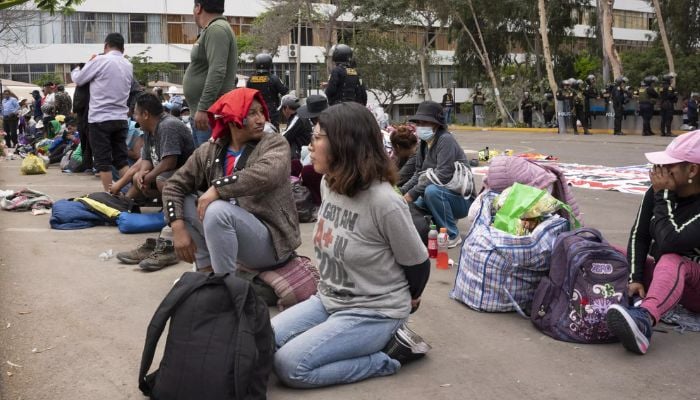LIMA (AFP/APP): Peru closed the Inca citadel of Machu Picchu Saturday and authorities expelled protesters from a Lima university where they have been holed up as they wage relentless anti-government demonstrations in the capital.
Protests demanding the resignation of Peruvian President Dina Boluarte have been ongoing since early December, leaving 46 people dead and prompting the government to impose a state of emergency in violence-hit areas. This crisis triggered by the ouster of leftist Indigenous president Pedro Castillo last month stems largely from a gaping inequity between Peru’s urban elite and poor rural Indigenous people in the Andean region who saw him as one of their own and working to make their lives better.
Authorities announced Saturday yet another protester had died following demonstrations in that Andean region in the south, with the victim arriving already deceased at a local hospital in the Puno region.
And video footage from the town of Ilave that went viral on social media shows police shooting right at Indigenous demonstrators in the town square. Enraged protesters responded by setting fire to a police station, local media reported.
Clashes between police and the crowd in that town near Lake Titicaca and the border with Bolivia left 10 people injured, hospital officials said.
Prior to the closing of Machu Picchu, rail services to the site had already been suspended due to damage to the track by demonstrators. The only way to get up to the popular tourist site is by train.
At least 400 people, including 300 foreigners, are stranded at the foot of the site, in the town of Aguas Calientes, and pleading to be evacuated. “The closure of the Inca trails network and the Machu Picchu citadel has been ordered due to the social situation and to preserve the safety of visitors,” the Ministry of Culture said in a Saturday statement. “We don’t know if a train will pick us up. All the tourists here are queuing to register” for evacuation, Chilean tourist Alem Lopez told AFP Friday.
Tourists “cannot leave because the railway has been damaged in different places,” Tourism Minister Luis Fernando Helguero said.
“Some tourists have chosen to walk to Piscacucho, but that takes six hours or more and very few people can do it,” he said.
Piscacucho is the closest village to Machu Picchu connected to the roads.
In December, several hundred stranded tourists were evacuated from near the site. Tourism is vital for Peru’s economy, representing between three to four percent of the country’s GDP. In Lima, where two days of mass mobilization by demonstrators from the country’s poor Andean region have just concluded, the situation Saturday remained tense. Security forces used an armored vehicle to breach the gate of the University of San Marcos in the city’s downtown, in an attempt to expel protesters who have been sleeping there. A large contingent of police searched occupants, sometimes forcing them to lie on the ground, AFP journalists observed.
Interior Minister Vicente Romero Canal N television that police intervened after university authorities said some of the squatters were committing crimes. He did not specify what these were.
Around 200 people were arrested, said Alfonso Barrenechea, a spokesman for the prosecutor’s office.
Protesters are trying to keep up pressure on the Peruvian government, defying a state of emergency that now covers almost one-third of the country. The European Union on Saturday condemned the chaos and the “very large number of casualties,” calling for a peaceful political solution in Peru. The protests were sparked when former president Castillo, a rural schoolteacher, was removed from office and arrested on December 7 after attempting to dissolve the country’s legislature and rule by decree, amid multiple corruption investigations.
Among the 46 dead since the protests began, 45 were protesters and one was a police officer.







